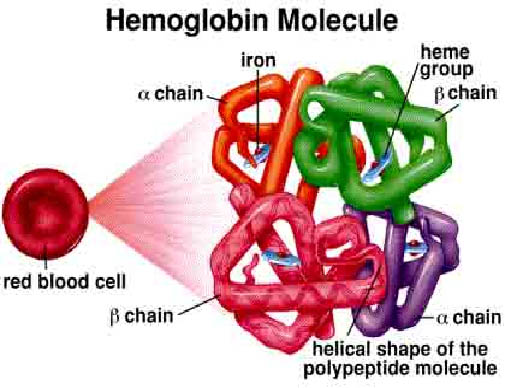How do cells carrying oxygen differ from normal cells?
1 Answer
Oxygen is carried by red blood cells or erythrocytes, a kind of cell laden with haemoglobin but lacking nucleus and mitochondria.
Explanation:
RBCs are disc shaped cells, very small in size compared to other mammalian cells-- 7 micron meter in diameter. It is biconcave when viewed from side and thus surface area for gaseous exchange is more. The cells are also flexible so that these can easily traverse through narrow blood capillaries.
The RBCs lack mitochondria which means these cells do not use the oxygen that they carry!! Thus they breathe anaerobically. Loss of mitochondria and nucleus is essential for maturation of RBCs from haemopoietic mother cells of bone marrow; this also helps in packing more of haemoglobin in RBCs. But this makes RBCs short lived with a life span of maximum 120 days .
33% of RBC cytoplasm is actually haemoglobin , a oxygen carrying conjugate protein pigment with quaternary structure. Haem is iron containing pigment while globin is the protein part.


